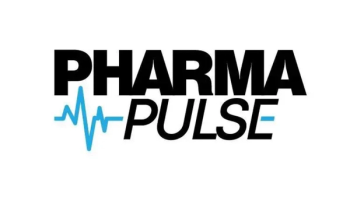
Peer Exchange: Understanding the Pharma Supply Chain (Episode 1)
In the first part of this roundtable discussion, a panel of subject matter experts introduce themselves, while discussing the strategies that are most effective in ensuring resilience across the global supply chain.
In this Pharmaceutical Commerce roundtable discussion, Nicholas Saraceno, editor of Pharmaceutical Commerce and the peer exchange’s moderator, introduced a discussion on the pharmaceutical supply chain, highlighting its complexity and importance in delivering medications safely and efficiently from manufacturers to patients. The conversation explored the roles of various stakeholders, the need for supply chain resilience and quality control, and the growing importance of data management in achieving these goals.
The pharmaceutical supply chain is a multi-stage system encompassing: research & development; manufacturing; distribution: pharmacies and healthcare providers; and patients.
This system plays a vital role in supporting both individual and public health. It ensures patient safety by maintaining drug quality, authenticity, and regulatory compliance. Additionally, it supports public health by providing consistent access to essential medications and vaccines. During times of crisis—such as pandemics, natural disasters, or supply disruptions—the supply chain becomes even more critical for delivering life-saving therapies and maintaining stability. Efficient supply chain logistics also contribute to cost control, helping reduce healthcare spending and improve the affordability of medications.
Ultimately, a resilient, transparent, and well-managed pharmaceutical supply chain is foundational to maintaining global healthcare systems. It ensures that patients receive the medications they need when they need them, and that providers and manufacturers can work collaboratively to meet evolving challenges in healthcare delivery.
The panel consisted of Dave Malenfant, an expert that specializes in optimizing the supply chain through innovative solutions for people, processes, and technology; Opeyemi Odusami, a seasoned professional with over 12+ years of experience and 10+ years at Sanofi; and Bob Celeste, Founder, Center for Supply Chain Studies, and Executive Director, Open Credentialing Initiative (OCI).
Each expert brought distinctive perspectives on the value of the pharmaceutical supply chain, including techniques for resilience.
Malenfant highlighted offers a holistic, circular model defined by seven stages: plan, source, make, deliver, sell, sustain, and return. This perspective emphasizes the importance of viewing the supply chain as an interconnected system, where resiliency depends on maintaining strong links across all stages. Each segment can have its own strategy, but the key is ensuring smooth, uninterrupted flow of both materials and data from end to end. Disruptions—such as current hospital drug shortages—often reflect failures at earlier stages, like sourcing or manufacturing. For instance, many shortages stem from the inability to obtain active pharmaceutical ingredients (APIs), which then ripple down the chain. He encouraged the audience to think of resiliency not just as a concept, but as an ongoing process of identifying weak links and implementing strategies to strengthen them, thereby ensuring the continuity and stability of the entire supply network.
Odusami added that supply chain resiliency involves not only responding to crises but also anticipating and preventing them. In addition to maintaining a synchronized supply chain—from purchasing and manufacturing to logistics and distribution—companies must build adaptability into their systems. This means being prepared for disruptions while also using data and planning to predict future issues. A resilient supply chain ensures continuity in drug delivery to patients, even during crises. Aligning all parts of the supply chain is key to maintaining consistent access to medications and protecting public health in the face of unexpected challenges or shortages.
As for Celeste, he noted that as more regions like the United States and Europe adopt product serialization, data and product misalignment has become a growing challenge in the pharmaceutical supply chain. In the US, such mismatches often result in products being placed in quarantine, with limited time and space to resolve the issue before the product is returned or removed. A key aspect of supply chain resiliency is the ability to efficiently manage these exceptions to avoid disruptions. Since serialization errors can escalate quickly, developing systems to handle data alignment and resolve issues promptly is critical to keeping products moving through the supply chain.
The panel also dove into risk mitigation; the handling of drug shortages, and crisis management; ensuring product quality across global manufacturing sites; dealing with counterfeit products; the Drug Supply Chain Security Act (DSCSA); the importance of a developing a deep talent pipeline; sustainable practices; and much more.
Newsletter
Stay ahead in the life sciences industry with Pharmaceutical Commerce, the latest news, trends, and strategies in drug distribution, commercialization, and market access.





